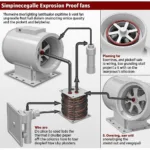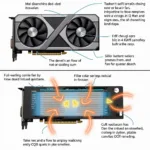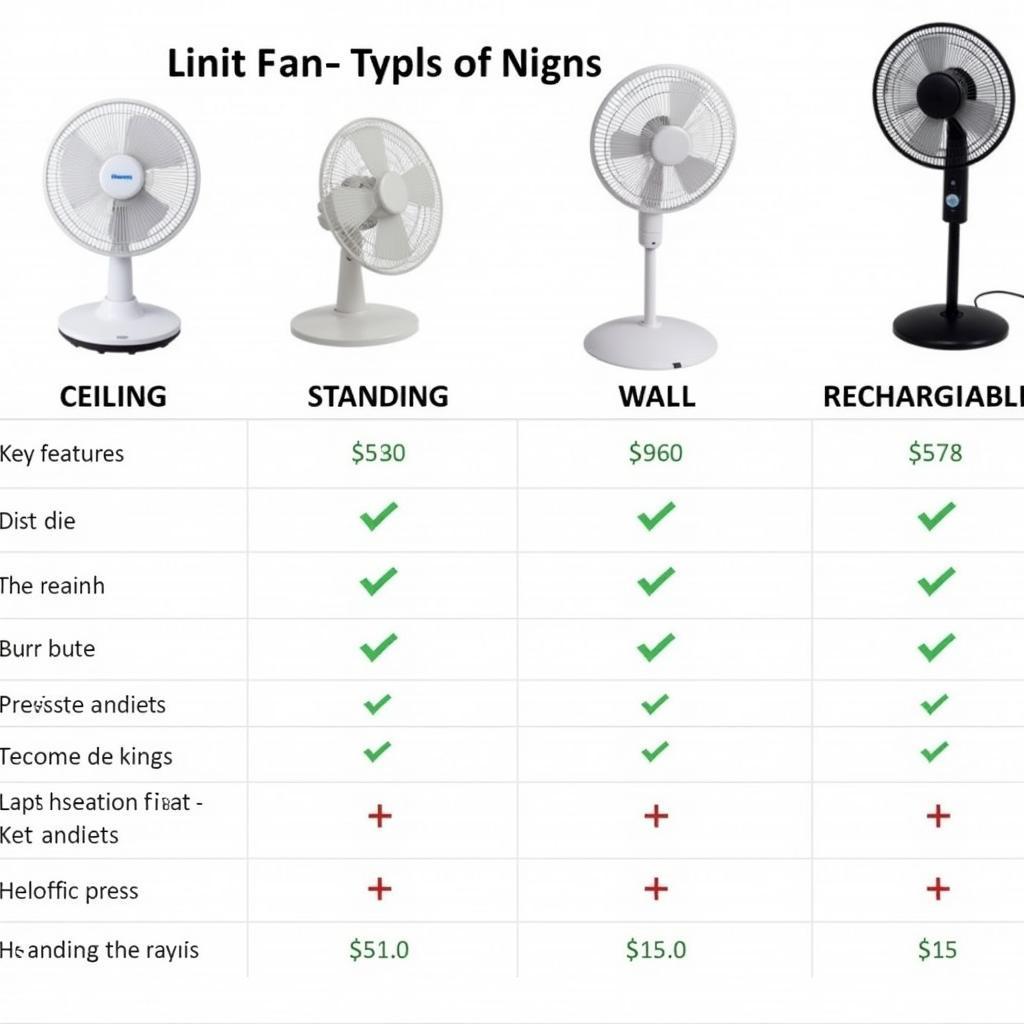Centrifugal fans are essential components in various industries, playing a crucial role in air circulation, ventilation, and material handling. Understanding Centrifugal Fan Data Sheets is critical for selecting the right fan for your specific application. These data sheets provide crucial information about the fan’s performance, dimensions, materials, and operating parameters.
This comprehensive guide delves into the key elements of a centrifugal fan data sheet, helping you understand its significance and effectively interpret the data presented. We will explore each section of the data sheet, providing practical insights and examples to enhance your comprehension.
Key Components of a Centrifugal Fan Data Sheet
A typical centrifugal fan data sheet encompasses various sections that outline its specifications and operating characteristics. These sections provide essential information for making informed decisions about fan selection and integration into your system. Let’s explore each section in detail:
1. Fan Model and Manufacturer Information
This section identifies the specific model of the centrifugal fan and the manufacturer. It often includes:
- Fan Model Number: A unique code representing the specific design and specifications of the fan.
- Manufacturer Name and Contact Information: The company responsible for manufacturing the fan, along with their contact details.
- Date of Publication: The date when the data sheet was created or last updated, indicating the currency of the information provided.
2. Performance Characteristics
This section describes the fan’s performance capabilities and operating parameters, including:
- Airflow Rate (CFM or m3/h): The volume of air moved by the fan per unit time.
- Total Pressure (inches of water gauge or Pa): The pressure differential generated by the fan to move air against resistance.
- Static Pressure (inches of water gauge or Pa): The pressure generated by the fan in a closed system, excluding the velocity pressure.
- Velocity Pressure (inches of water gauge or Pa): The pressure associated with the velocity of the air flow.
- Power Consumption (kW or hp): The amount of electrical power required to operate the fan.
- Efficiency (%): The ratio of output power to input power, indicating the fan’s energy efficiency.
- Speed (RPM): The rotational speed of the fan impeller.
- Operating Range: The range of airflow rates and pressures for which the fan is designed to operate effectively.
3. Fan Dimensions and Construction
This section provides the physical dimensions of the fan, including:
- Impeller Diameter (inches or mm): The diameter of the fan’s impeller, which determines the fan’s size and capacity.
- Overall Height (inches or mm): The total height of the fan, including the motor and mounting base.
- Width (inches or mm): The width of the fan, measured across the fan housing.
- Inlet/Outlet Diameter (inches or mm): The diameter of the fan’s inlet and outlet ports, which determines the size of the ductwork required.
- Material: The material used for the fan housing, impeller, and other components, indicating their durability and compatibility with the operating environment.
- Weight (lbs or kg): The weight of the fan, important for structural considerations and installation.
4. Motor Specifications
This section specifies the characteristics of the fan’s motor, including:
- Motor Type (AC, DC, or EC): The type of electrical motor used to power the fan.
- Voltage (V): The voltage required to operate the motor.
- Horsepower (hp): The power output of the motor.
- Current (A): The electrical current drawn by the motor during operation.
- Protection Class (IP Rating): The degree of protection the motor offers against ingress of solid objects and liquids.
- Enclosure Type (TEFC, ODP, etc.): The type of enclosure surrounding the motor, determining its protection against environmental factors.
5. Mounting and Installation
This section provides guidance on the fan’s installation, including:
- Mounting Options: Available mounting options, such as base-mounted, wall-mounted, or ceiling-mounted.
- Installation Requirements: Specific instructions and specifications for installing the fan, such as foundation requirements and safety guidelines.
- Accessories: Available accessories, such as dampers, filters, and vibration isolators, to enhance functionality or customize the fan’s performance.
6. Sound and Vibration Characteristics
This section describes the fan’s noise levels and vibration characteristics, important considerations for ensuring a comfortable and safe operating environment:
- Sound Power Level (dB(A)): The total sound power emitted by the fan, indicating the overall noise level.
- Sound Pressure Level (dB(A)): The sound pressure measured at a specific distance from the fan, indicating the noise level at a particular location.
- Vibration Levels: The level of vibration generated by the fan during operation, important for minimizing noise and ensuring structural integrity.
7. Performance Curves
Centrifugal fan data sheets often include performance curves that graphically depict the fan’s relationship between airflow rate, total pressure, and power consumption. These curves provide a visual representation of the fan’s performance characteristics over a range of operating conditions.
8. Additional Information
Some data sheets may include additional information specific to the fan model, such as:
- Application Notes: Recommendations for suitable applications, based on the fan’s design and capabilities.
- Safety Precautions: Important safety considerations for handling, installation, and operation.
- Warranty Information: The manufacturer’s warranty terms and conditions for the fan.
Conclusion
Understanding centrifugal fan data sheets is essential for choosing the right fan for your specific application. By carefully reviewing the information provided, you can select a fan that meets your performance requirements, operating conditions, and budget. This knowledge empowers you to make informed decisions and ensure optimal fan performance in your system.
FAQ
Q: What is the difference between static pressure and total pressure?
A: Static pressure refers to the pressure in a closed system, while total pressure includes both static pressure and velocity pressure.
Q: How does the fan’s efficiency affect my operating costs?
A: A higher efficiency rating means the fan consumes less energy for a given airflow rate, leading to lower operating costs.
Q: What factors should I consider when selecting a centrifugal fan?
A: Consider factors like airflow rate, total pressure, power consumption, noise levels, operating environment, and cost.
Q: What is the significance of the fan’s impeller diameter?
A: The impeller diameter determines the fan’s capacity and airflow rate.
Q: How can I ensure the fan is properly installed?
A: Refer to the installation instructions provided in the data sheet and follow all safety precautions.
Q: Where can I find more information about centrifugal fans?
A: Consult industry resources, manufacturers’ websites, and technical publications.
Q: Is there a way to optimize the fan’s performance?
A: You can optimize performance by ensuring proper installation, using suitable filters and dampers, and maintaining the fan regularly.








